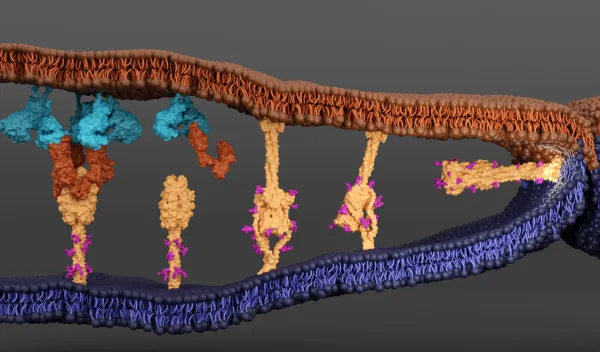
Process by which COVID-19 latches onto and enters human cells is revealed
A team led by researchers with the U.S. National Science Foundation Physics Frontiers Center for Theoretical Biological Physics at Rice University have provided a new atomic-level understanding of how coronaviruses, including the virus that causes COVID-19, are able to infect human cells.
Published in the journal Science, the researchers' findings are based on atomic-scale images acquired through a technique called cryo-electron tomography combined with computer simulations and theoretical predictions. Their work revealed the actual shape-changing sequence that allows coronavirus proteins to fuse with human cells. Understanding the details of that complex process could enable the development of new medical therapies and vaccines that are broadly effective for many coronaviruses strains.
"This research is a step forward in the fight against COVID-19 and other coronaviruses that may emerge in the future," says Saul Gonzalez, director of the NSF Division of Physics. "Understanding the fundamental physical workings within intricate biological mechanisms is essential for developing more effective and universal treatments that can protect our health and save lives."
The SARS-CoV-2 virus responsible for COVID-19 uses its spike-shaped protein to attach to a particular enzyme on human cells, which begins a process that allows it to enter the cell. The spike protein has two main parts or "domains," the S1 domain and the S2 domain. Unlike the S1 domain, the S2 domain is similar across different coronaviruses, making it a promising target for vaccines and therapies that could work against many strains of the virus.
"This new work confirms what was originally put forth as a theory by the researchers, showing the power of experimentation and computing coming together to advance our understanding," said Wilson Francisco, program director in NSF’s Division of Molecular and Cellular Biosciences. "In addition to validating the theory, this work is important as it opens up the possibility of a pan-SARS vaccine, helping us to be more prepared should another coronavirus pandemic arise."
